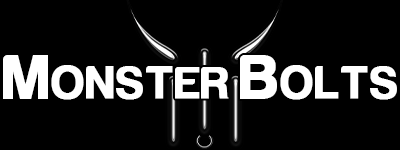Fastener Terms Explained: The Complete Glossary for Screws, Bolts, and Nuts
Confused by “12.9 Alloy,” “Tap Bolt,” or “Pozidriv”? This plain-English glossary from Monster Bolts explains the most common terms used across screws, bolts, nuts, washers, drives, materials, finishes, and strength classes. Bookmark it as your quick reference—and use the search box below to jump to any term.
Screw Types
“A” Sheet Metal Screws — Sharp point with deeper threads for thin sheet; more aggressive than AB.
“AB” Sheet Metal Screws — Hybrid of A and B; pointed tip with finer threads for better start and hold.
Cap Screw — Often used interchangeably with hex head bolt; typically features a washer face. See hex bolts.
Machine Screw — Straight shank, machine thread; used with tapped holes or nuts.
Self-Tapping Screw — Forms threads in the mating material; pilot hole recommended.
Self-Drilling Screw — Includes a drill-point tip; no separate drilling step needed for thin stock.
Set Screw — Headless screw driven from the end; secures pulleys/gears to shafts.
Tap Bolt — Fully threaded hex bolt (threads run the full length of the shank).
Wood Screw — Coarse thread with tapered shank for wood; typically sharp point.
Screw Drive Types
- Slotted (Flat) — Single slot; best for manual driving; prone to cam-out.
- Phillips — Self-centering cross; good for powered drivers; can cam-out at high torque.
- Pozidriv — Phillips-like with extra ribs; more torque, less cam-out (requires correct bit).
- Square (Robertson) — Excellent torque transfer; common in woodworking.
- Hex (Allen) — Six-sided recess; common on socket screws; pairs with hex keys.
- Torx (Star) — Six-point star; high torque, low cam-out; popular in automotive/electronics.

Screw Head Styles
- Flat Head — Countersunk; sits flush with the surface.
- Oval Head — Countersunk with a low dome; decorative flush appearance.
- Pan Head — Rounded top with short vertical sides; general-purpose.
- Truss Head — Extra-wide, low profile to spread load.
- Button Head — Low, rounded head; commonly hex/Allen drive.
- Socket Head Cap Screw — Cylindrical head with recessed hex; high strength in limited space.
Nut Types
Acorn (Cap) Nut — Domed top covers exposed threads.
Jam Nut — Thin nut; locks against a standard nut to resist loosening.
Castle Nut — Slotted nut used with a cotter pin for mechanical locking.
Nylon Insert Locknut (Nyloc) — Nylon ring increases friction to resist vibration.
Flange Nut — Built-in washer face to spread load.
Stover (All-Metal) Lock Nut — Deformed thread for prevailing torque without nylon.
Washer Types
- Flat Washer — Spreads load; prevents pull-through.
- Split Lock Washer — Spring action resists loosening (limited in high-vibration specs).
- Tooth Lock Washer — Internal/external teeth bite to resist rotation.
- Fender Washer — Large OD for thin/soft materials.
- Belleville (Conical) — Spring washer for consistent preload; can be stacked.
Materials
Alloy Steel — Heat-treatable; used for high-strength classes (e.g., 12.9, 10.9).
Carbon Steel — Common structural steel; strength depends on grade and treatment.
Stainless Steel A2-70 — ≈304/18-8; min tensile ~700 MPa; great general corrosion resistance.
Stainless Steel A4-80 — ≈316; min tensile ~800 MPa; better chloride resistance (marine).
Titanium (e.g., Grade 5) — High strength-to-weight; non-magnetic; excellent corrosion resistance.
Brass / Copper Alloys — Good conductivity and corrosion resistance; lower strength.
Finishes & Coatings
Black Oxide — Mild corrosion resistance; low dimensional change; dark appearance.
Zinc Plated (Clear/Yellow) — Economical corrosion protection; chromate color varies.
Hot-Dip Galvanized — Thick zinc layer; strong corrosion resistance; threads may require oversize nuts.
Nickel / Chrome — Decorative; hardness/wear benefits.
Dry Film Lubricant / Wax — Reduces friction and galling; stabilizes torque-tension.
Threading Terms
UNC / UNF / UNEF — Unified coarse/fine/extra-fine inch threads (e.g., 1/4-20 UNC, 1/4-28 UNF).
Metric Thread Pitch — mm between threads (e.g., M6-1.0). See Metric Pitch Table.
TPI (Threads Per Inch) — Count of thread peaks per inch (inch series). See US TPI Table.
Major / Minor / Pitch Diameter — Outer/inner/mean diameters used for thread fit.
Class of Fit — Tolerance system (e.g., 2A/2B, 3A/3B) balancing ease of assembly vs precision.
Helicoil / Insert — Wire or solid inserts used to repair/strengthen tapped threads.
Strength & Testing
Proof Load — Max axial load without permanent set.
Yield Strength — Stress at which permanent deformation begins.
Tensile Strength — Ultimate stress prior to fracture.
Metric Classes — 12.9 (~1220 MPa tensile), 10.9 (~1040 MPa), 8.8 (~800–830 MPa); see metric strength chart.
Stainless Classes — A2-70 (~700 MPa), A4-80 (~800 MPa); see stainless grades.
